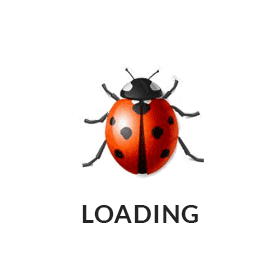

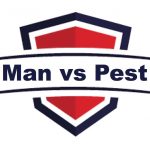
HISTORICAL PERSPECTIVE
HUMAN INTERACTIONS
PEST HISTORY
TIMELINE
MAN VS PEST
RODENTS & FLEAS WAS THE CAUSE FOR ‘BLACK DEATH’ IN THE 14TH CENTURY ESTIMATED OF KILLING 60 PERCENT OF THE POPULATION OF EUROPE 50 MILLION PEOPLE.
The history is usually on the impacts of human choices and action. Historians discuss the implications of environmental conditions and events on important events shaping the course of human history. For example, the effects of insects and the diseases transmitted by them on events such as military campaigns are typically under-appreciated. The fact that epidemics have profoundly influenced human culture and history has received more attention.
In light of the ubiquity of insects, their prominent role in the function of terrestrial eco-systems, and their myriad interactions with human beings, it is not surprising that insects have been involved in nearly every aspect of human history. Insects were there when we started on the path to domesticating a set of plants and animals and entered into the age of agriculture, technology, and civilization; insects were there for some of science’s biggest triumphs such as the development of the microbial theory of disease and the role of genetics in organic evolution; and will likely be there when the last of our kind passes from the earth.
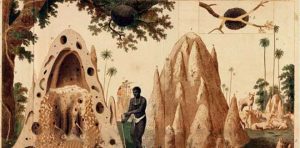
Pest control has probably been a human process since the beginning of human history. Pests are whatever animals or plants that hinder human progress or human industries. Some pests are just a nuisance to humans and some are deadly like a mosquito. Other pests are more detrimental to human development, like locusts eating crops.
One person’s pest can be another person’s benefit. While a specific bug damages a certain crop. That bug needs to be controlled in terms of that certain crop. However, that same bug may not damage a different crop. Instead, it could protect that crop by eating the other pests, plants, or microbes, that could damage that different crop.
Early humans were hunter-gathers, so the pest’s humans had to concern themselves was fleas, bed bugs, mosquitoes, etc. As soon as humans became a more agricultural society, control tactics had to be developed to protect the early crops from being destroyed. Indeed, the success and growth of agricultural society could have not have happened if early pest management was not implemented.

Pest control is at least as old as agriculture, as there has always been a need to keep crops free from pests. As long ago as 3000 BC in Egypt, cats were used to control pests of grain stores such as rodents. Ferrets were domesticated by 500 AD in Europe for use as mousers. Mongooses were introduced into homes to control rodents and snakes, probably by the ancient Egyptians.
The Sumerians have the oldest records concerning pests that we have so far discovered, dating back to 2500 BC. The Sumerian texts describe using sulfur to control and ward off insects. The Chinese have ancient records, dating back to 500 BC, about using mercury and arsenic on human skin to control lice. Egyptians, also as far back as 500 BC, have records on the use of bed-nets to prevent mosquito bites.
One of the first historical materials that showed people using another pest to control a pest population were Arabs in 1000 AD. In that time, Arab farmers would use a species of ants from mountainous regions to attack the local ants that consumed date crops. Europeans were late bloomers to develop control strategies, with only large-scale management against pests coming in during the Renaissance and the Enlightenment. Swedish scientists in the 1700s developed the study and cataloging of pests, helping farmers and other scientists create strategies to fight off pests for medical and agricultural reasons.
Pest control is at least as old as agriculture, as there has always been a need to keep crops free from pests. As long ago as 3000 BC in Egypt, cats were used to control pests of grain stores such as rodents. Ferrets were domesticated by 500 AD in Europe for use as mousers. Mongooses were introduced into homes to control rodents and snakes, probably by the ancient Egyptians.
The Sumerians have the oldest records concerning pests that we have so far discovered, dating back to 2500 BC. The Sumerian texts describe using sulfur to control and ward off insects. The Chinese have ancient records, dating back to 500 BC, about using mercury and arsenic on human skin to control lice. Egyptians, also as far back as 500 BC, have records on the use of bed-nets to prevent mosquito bites.
One of the first historical materials that showed people using another pest to control a pest population were Arabs in 1000 AD. In that time, Arab farmers would use a species of ants from mountainous regions to attack the local ants that consumed date crops. Europeans were late bloomers to develop control strategies, with only large-scale management against pests coming in during the Renaissance and the Enlightenment. Swedish scientists in the 1700s developed the study and cataloging of pests, helping farmers and other scientists create strategies to fight off pests for medical and agricultural reasons
Chemical pest control is still the predominant type of pest control today, although a renewed interest in traditional and biological pest control developed towards the end of the 20th century and continues to this day
The beginning of the 19th century, pest management made immense scientific strides, but also witness horrific global events from uncontrolled infestations. The 19th century saw the rise of multiple of scientific disciplines, including the study of pests and pest management. Universities crafted scientific programs of study, like entomology or public health, related to how pests affected human health and agricultural. These findings helped countries, public health campaigns, and the agricultural sector control pests with more accurate scientific investments and new chemicals that could kill pests, called pesticides.
However, the increasing globalized world from trade and imperialism caused pest epidemics to increase. Urbanization from the Industrial Revolution increased the amount of personal pests, like lice and bed bugs. Meanwhile, whole countries faced radical pest problems that led to millions of deaths, such as the Irish potato famine.
The 20th century, the synthesis of more complex chemicals in pesticides led to the mass industrial creation and marketing of pest products to the commercial sector and to governments for agricultural control. Many of these pesticides either killed pests on contact, damaged the pest’s reproductive systems and pest repellents. At the same time, professional pest control businesses began, where the professionals could be hired to implement strategies that remove pests from households or crops.
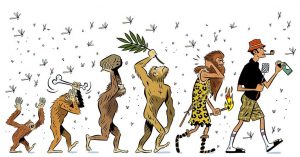
The history of pest control is linked toward the social and cultural evolution of humankind. New pests come up depending on the new human innovation, such as agriculture. But, pests have been around with mankind since the beginning and will evolve as humans evolve. In the past as well as present, pest control has always been a necessity.
As early as man could document there has been evidence of pest management methods as early as 2500 B.C. The ancient ‘Mesopotamians’ used Sulfur blended with other minerals to reduce pests in homes.
Chinese develop a theory called phenology (which later becomes a science). What their version of phenology was timing the planting of certain types of plants right before known insect season. These plants usually either repelled insects or killed them after consumption.
Chinese begin to use homemade soaps has pesticide.
The development of infusing the Tobacco plants with nicotine and arsenic was a major break-through for the pest management industry at the time. Tobacco farmers had much trouble with pests devastating this cash crop.
Around this time many were starting to understand the correlation between crop devastation and large pest populations. The ‘Colorado potato beetle’ cause major losses at this time to many farmers potato crop. This discovery also started pest inspections as well as a greater interest in pest management methods.
The development of a concoction containing copper sulfate & arsenic to help keep control of the ‘Colorado potato beetle’ population.
Greater interest in the invention and development of pest control equipment.
This is time that pesticides were developed but not widely used. The toxicity, over-application, in-effectiveness and expense was not worth it to many. Trend of producing synthetic pesticides DDT was founded by a Swiss chemist named ‘Paul Hermann Muller” to control yellow fever, malaria and other similar diseases. The use of this chemical during World War II saved thousands of soldiers’ lives.
Big push toward synthetic pesticides and fertilizers. This will cause cheaper cost and wider distribution.
Citizens start to consider the health risks on certain pesticides. Tests show DDT contaminating ground water, and killing wild life.
The research of IPM as a pest management tool.
Utilization of GMO crops to keep pest numbers down. Bigger push of IPM, less use of pesticides.
A big jump in research of “green” non-toxic pesticides. Heating and freezing methods introduced instead of pesticide use and the inception non-repellent and termite baiting technology
Carbon Neutral Pest Control era. Exterminators becomes the 1st pest control company to be carbon neutral certified in the world and to offer 100% carbon neutral pest control services and the ‘Smart Missile’ – The world’s first and only termite station and the only pest related product certified ‘Carbon Neutral’. Invented by Exterminators.
Beyond Pest Control Model– Pest Analysis Critical Control Points (PACCP) evolves to enhance the pest management standards and to align it with health, safety and food safety and to significantly mitigate the environmental impact related to pest management. This model also identifies the ‘pest-risk’ well in advance and mitigate the ‘pest-risk’. This model is designed and invented by Exterminators.

Insects pests have influenced the course of human history by impacting events that shape history, such as wars, or by changing the way societies or important individuals can or cannot accomplish critical activities. Insects have interacted with our mammalian and hominid ancestors throughout the course of evolutionary history, and their presence undoubtedly influenced many aspects of our evolution.
Indeed, insects played a role in the radiation in a lineage of mammals that gave rise to the arboreal, manually dexterous, relatively intelligent primates with binocular vision from which we evolved. Our predecessors evolved in the three-dimensional world of large, angiosperms trees that owe many of their characteristics to co-evolutionary relationships with insects. Likely, Homo sapiens would never have existed in the absence of insects.
Some insect-influenced historical events resulted from singular interactions between humans whereas others involved more prolonged association.
Among the former are serendipitous instances of inspiration by example that led to important technological advances. Ever since the “Invention” of paper was first proclaimed to the Chinese emperor ‘Ho Ti’ in 105 A.D., a variety of plant fibers were used in the production of paper. As writing flourished, supplies of raw materials for making paper became in short supply.
18th century Europe, where paper was made primarily from cotton and linen. It was here that observations of paper wasps inspired the French naturalist and physicist ‘Rene Antoine Ferchault de Reaumer’ to suggest the use of wood as a papermaking fiber in 1719. These wasps, which chew wood and mix the fibers with saliva to make their nests, served as the inspiration for the use of the plentiful fiber on which modern papermaking is based. This encounter helped to revolutionize the production of one product that has greatly shaped the whole of human civilization over the past 2000 years.
An insect also played a central role in one of the independent discoveries of the process of animation. Segundo de Chomon, Spanish pioneer filmmaker, developed the technique of stop-motion animation in film in 1902 after observing the results accidentally produced by a fly slowly walking across pieces of paper. The different positions of the fly during a series of frames produced by slow and irregular exposures of a still object (title cards for a silent film), resulted in the appearance of a fly jumping about the screen.
A single encounter with a mosquito may have even been the downfall of “Alexander the Great’ in Babylon in 323 B.C. Had these encounters never taken place, the path of history leading to the present would have been different.
INSECTS HAVE ALSO SERVED AS IMPORTANT DETERMINANTS IN THE FATES OF HUMAN SOCIETIES AND ECONOMIES THROUGHOUT HUMAN HISTORY, SOMETIMES THROUGH EXPLOITATION OF RESOURCES PROVIDED BY THE INSECTS THEMSELVES.
The survival of the Israelites during their extended journey through the ‘Sinai Desert’ was apparently made possible by insects. The manna that they gathered, ate, and survived upon was most likely the excretions of scale insects. Likewise, if not for the arrival and help of “divinely inspired” seagulls, a plague of Mormon crickets in 1848 may have ruined the crops and doomed the Mormons soon after their arrival in their new home in Utah.
In direct economic terms, insect products such as cochineal and silk were central to the economies of the Aztec and Chinese empires respectively. Furthermore, the silk trade helped establish cultural and economic relationships between China and the rest of the world.
Influences of insects on the geographical history of mankind were mediated by negative impacts of insects on humans. This is where the ancient war against survival begins ‘Man Vs Pest’.
At least 3 of the 10 plagues of Egypt that are described in the Bible and in the ‘Ipuwer papyrus’ of ancient Egypt directly involved insects. These plagues and the resultant exodus of the ‘Jews’ from Egyptian bondage are important elements of the cultural history of these people.
More recently, the Panama Canal was built and ultimately controlled by the United States in part because the earlier effort by France was thwarted by mosquito-borne yellow fever.
The role of insects affecting societies is clearly seen in Africa, where the human species originated. For example, as vectors of African sleeping sickness, Glossina spp. (Diptera) have made huge pieces of land in Africa uninhabitable by humans. Other parts of Africa were “protected” from European colonization by Anopheles mosquitoes that transmit malaria. Indeed entire cities changed place because of insects.
Other parts of the world clearly show human influences as well. According to ancient writings, the inhabitants of the city of the ‘Miatines; were driven out by fleas as were the people of Myas, a major city of Ionia (now part of Turkey), that was abandoned because of these insects. Contenebra, an ancient city near the Volsician Lake (now part of Italy), was overthrown by ants.
The people of the Isle of Crete were displaced by bees, whereupon these insects used their homes to build their hives.
The American explorers Lewis and Clark tell of the native inhabitants of the upper Missouri River that would relocate their settlements on account of torment from fleas.
According to Thomas Mouffet’s “Theater of Insects” of 1658, persecution by hordes of mosquitoes similarly depopulated cities in ancient Greece and many nearby regions around the Mediterranean Sea in ancient times.
On a larger scale, the downfall of the Roman Empire was apparently hastened by mosquito-borne disease such as malaria. As a result of deforestation and subsequent siltation of waterways, vast swampy areas around Rome developed into a breeding ground for mosquitoes.
Most of time helping its own community from intruders
The activities of insects, primarily by transmitting disease to troops in battle, can have profound effects on warfare between humans. In many military campaigns, the number of casualties attributed to insects has exceeded that caused by actual fighting. This is even true in recent conflicts, such as the American-Vietnam War. In cases where such losses of men and resources are one-sided, the actions of insects have determined the outcome of entire wars and thus have altered the course of history.
According to the Old Testament (Deuteronomy 7:20, Joshua 24:12), hornets were the agents of providence used to drive out the unworthy inhabitants of Canaan and allow them to be overthrown by the Israelites.
During an invasion of the Roman city of Nisibis by the Persian king Sapor in 360 A.D. . Bishop James ascended a tower, prayed for deliverance, and was answered when swarms of gnats descended against the invaders and drove them out.
More than one instance of besieged inhabitants fending off intruders with bees, either by driving the bees toward the enemy with fire or bombarding the attackers with hives, is recorded in ancient writings.
Instances and accusations of entomological warfare span the course of written history and include the introduction of agricultural pests by the north onto southern crops during the American Civil War.
Dispersal of plague infested fleas into China by Japan during World War II, and the introduction of many species of bacteria-laden insects into Korea by the United States during the Korean War.
Although human-manipulated insects have played a minor role in military actions, natural encounters with insects have played the most important role in shaping the outcomes of military campaigns and thus the direction of history. By their persistent torment or role in transmitting disease, insects often mediate the greatest pain and suffering experienced on the battlefield and it was typical that more loss of life was attributed to insect-borne disease than to bullets or bombs.
A prominent example of this comes from the American Civil War (1861-1865).
Although the effect of insects on the outcome of the war is unknown, the constant presence of filth flies, mosquitoes, lice, and fleas among both Union and Confederate troops was the greatest cause of misery among the soldiers. Hordes of filth flies generated by the bodies of dead combatants, cattle, horses, mules, and the associated waste from the vast numbers of living men and animals helped spread cholera, typhoid, diarrhea, and dysentery. Such diseases killed tens of thousands of troops on both sides of the battle lines. Lice and fleas brought general torment on a daily basis, especially in prison camps.
Voracious mosquitoes (gallinippers) were a tremendous nuisance and malaria was common on both sides. The effects of this disease among Union troops debilitated so many soldiers that at least one campaign, the first attempt to capture Vicksburg, Mississippi, in 1862, was unsuccessful.
The army of Julian the Apostate, Roman emperor (~361-363 A.D.) Flavius Claudius Julianus, was so fiercely attacked by biting flies (likely mosquitoes) in one campaign that they were driven to retreat.
Flea-borne plague is attributed with decimating the Assyrian army of King Sennacherib, causing them to turn back and abort their assault of Jerusalem in 701 B.C.
Ravaged European Crusaders throughout the Middle East (bubonic plague— fleas).
Failed campaigns of Germany against Hungary (typhus—lice) in 1566, and the Austrian defeat by the French (typhus—lice) in 1741.
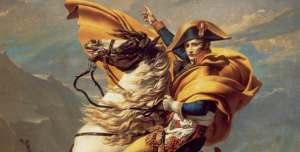
The most exemplary and well-researched instances of insect-mediated effects on the outcomes of military operations and the resulting consequences are those involving tremendous losses of personnel and unsuccessful campaigns of the French under ‘General Napoleon Bonaparte”.
Three military campaigns of the French under Napoleon Bonaparte, the invasion of Egypt and Syria (1798-1799), the establishment of a stronghold in the Caribbean on Saint Dominique (Hispaniola) (1801-1803), and the invasion of Russia (1812-1813), all proved unsuccessful, largely because of obstacles and losses resulting from insect-borne diseases.
With the goal of checking the power of England in the east, Napoleon and 13,000 troops invaded Syria from Egypt. Within months, bubonic plague, transmitted by fleas, killed an estimated 2000 troops and demoralized and frightened thousands more. The mission was abandoned and France’s army retreated to Egypt.
Napoleon’s dream of establishing a New World empire was linked to French control of Haiti. From here it was a short distance to the real goal of controlling the vast lands of the Mississippi Valley in North America. These French holdings had tremendous potential and were a major threat to British interests in the region. By 1798, France controlled the island after the British withdrew, primarily because of mosquito-vectored yellow fever. French troops sent to secure the island in January of 1802 were soon experiencing this disease, with devastating consequences. By April, one-third of the troops had succumbed to yellow fever and by late in the year only a few thousand of the nearly 50,000 French military and support personnel survived to return to France. The failure to control the island, largely because of staggering losses from yellow fever, led Napoleon to abandon hopes of an empire in North America and France sold its holdings (828,000 square miles) to the young United States in 1803 for a mere $15 million. As a consequence, the United States remained neutral in France’s war with England. The following year, Haiti declared independence, the first country in Latin America to do so.
The most dramatic and well-documented French military catastrophe that was mediated by insects involved the destruction of Napoleon’s Grand Army, in large part from louse-borne typhus. In June 1812, - 500,000 French and allied troops set out to invade Russia in an effort to gain control of lands in central Asia whereby Napoleon could invade and ultimately control British-ruled India from the north.
--By the time they invaded Moscow in September, Napoleon’s army was reduced to 100,000 men, to a significant extent because of typhus that was nearly 100% fatal under the prevailing conditions. The troops were under-nourished and in poor health from living in filthy conditions, and they were battling increasingly harsh weather as well as opposing forces as they moved through and encountered the louse-ridden peasants of Poland and eastern Russia. With nothing to support them in Moscow, nearly destroyed by the Russians as they burned and left the city to the French, Napoleon’s forces began their retreat during the cold Russian winter.
--The suffering on the way back was worse. By the end of the year, fewer than 40,000 remained to cross the western border of Poland. The Grand Army was decimated and General Bonaparte lost his reputation of invincibility. Within a few years he would suffer his last defeat at Waterloo, end as Emperor of France, and die in British-enforced exile on the south Atlantic island of Saint Helena.
--Dreams of toppling English supremacy in the world and plans for a French empire were never realized. Although many factors influenced the ultimate outcome of the military campaigns that sought to impose French rule on geographically strategic lands, the role of insects, in this case as vectors of disease, was significant.
History would have taken a different, albeit unknown, course in this case and world geography would be different if not for the ever present companions of the battlefield—fleas, mosquitoes, and lice.
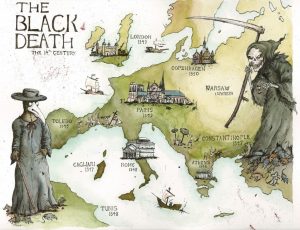
Perhaps the greatest and most lasting effect of insects on the course of history was the result of sweeping economic, religious, and social reform because of the deadly bubonic plague of Medieval Europe that was spread by fleas. This disease, particularly the huge epidemic known as the Black Death (1346-1353) that ravaged Europe, Asia Minor, the Middle East, and northern Africa, resulted in drastic and significant changes in the social and economic structure in Europe during the 14th and 15th centuries, changes that influence the nature of human society to this day.
Economic trends during the Late Medieval Period such as the rising cost of food, falling incomes, increasing population pressures on natural resources, and general increase in cost of living were reversed in the time following the significant drop in the size of the population, particularly among the working people.
Modern analysis of demographic data describes a 50-60% reduction in the size of the population in Europe during the Black Death, a staggering loss of some 50 million people. The impacts of demand and consumption changed, the large landowners lost their labor force, and the peasantry achieved newfound bargaining power. This time became the golden era of the working class and poor country folk that survived the plague.
Increased purchasing power of the lower classes changed consumption patterns of resources and goods. The collapse of feudalism allowed the rise of a capitalist market economy and a more organized workforce, particularly in western Europe. The greatly increased cost of labor resulting from the reduced workforce provided a stimulus for technological innovation that could permit more efficient production. This in turn led to better, more productive machinery and mass production of cheap goods, particularly by the Dutch and English, whereby the economic and financial center of Europe shifted from Italy to England and the “Low Countries” of northwestern Europe; eventually setting the stage for the Industrial Revolution and ultimately the age of technology in which we live today.
Consequent struggles over power at this time resulted in a series of wars in Europe, including Spanish victories over the Muslims in the Iberian Peninsula in the late 1400s. The resultant re- conquest and unification of Spain under Ferdinand and Isabella gave Spain the opportunity, while other powers were busy (England engaged in civil war, War of the Roses) or unwilling, to conquer faraway lands. Thus the exploration that led to the definitive discovery and conquest of the New World.
Another aspect of this tragedy was that the Black Death was interpreted by many as punishment by God, partly for their own lack of piety and perhaps for allowing non-Christian peoples (i.e., the Jews), to live among them. These socially and economically convenient scapegoats were subsequently driven away or killed. Many Jewish people thus fled from western to eastern Europe where they would experience near annihilation six centuries later.
Furthermore, dealing with the religious conclusions of this interpretation, and the general experience of individuals coming to grips with such tremendous loss of life in this and subsequent plague events, was influential in the religious transformation of Europe that culminated in the Protestant Reformation of the early 16th century. This time also saw a shift from purely religious education to more secular educational ideals that were based on classical ideas. This in turn opened the mind to the scientific exploration of reality.
Lastly, the organized process of combating the plague spawned the notion that governments had responsibilities toward maintaining the welfare of the people they governed. What is important is that the structure of society did not go back to pre-plague conditions, but was drastically altered in a new and lasting way that is still felt today. These profound economic, demographic, and political changes were ultimately spawned by human interactions with fleas.
Copyright 2019 Exterminators . all right reserved - design by xiteb